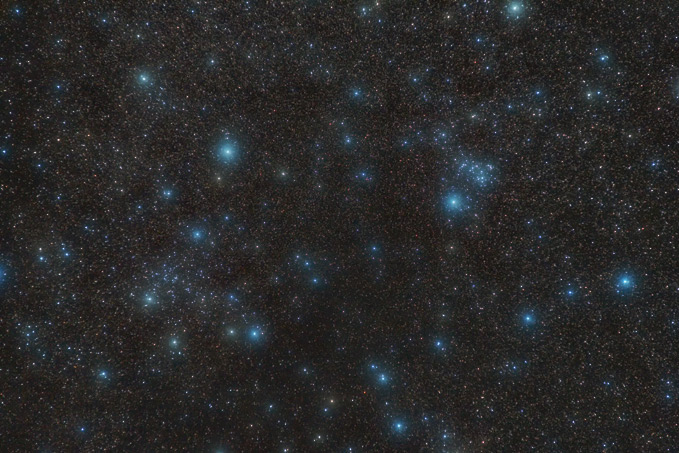| IC4756 / Open Cluster, type d, II 3 r |
|---|
| R.A. | 18h 39m 0.0s (2000.0) |
|---|
| Dec. | +05°27' 00" (2000.0) |
|---|
| Apparent Size | 70' |
|---|
| Real Size | 33 light yrs. |
|---|
| # of Stars | 80 |
|---|
| Magnitude | 5.1 |
|---|
| Distance | 1620 light yrs. |
|---|
|
| NGC6633 / Open Cluster, type d, III 2 m |
|---|
| R.A. | 18h 27m 42.0s (2000.0) |
|---|
| Dec. | +06°34' 00" (2000.0) |
|---|
| Apparent Size | 20' |
|---|
| Real Size | 9 light yrs. |
|---|
| # of Stars | 30 |
|---|
| Magnitude | 4.9 |
|---|
| Distance | 1620 light yrs. |
|---|
|
These open clusters are paralleling with an interval of about 3 degrees bathed in the Milky Way in summer.
Left one is IC4756 and right one has a number of NGC6633, belong to constellations of Serpens Cauda and Ophiuchus, respectively.
IC4756 has an apparent size of over 1 degree, and NGC6633 is over 20 arc minutes in diameter,
so small binoculars are most suitable for appreciating those clusters.
Because background Milky Way is fairly striking, good conditioned skies might be needed to enjoy fine and beautiful individual member stars in those clusters.
|

